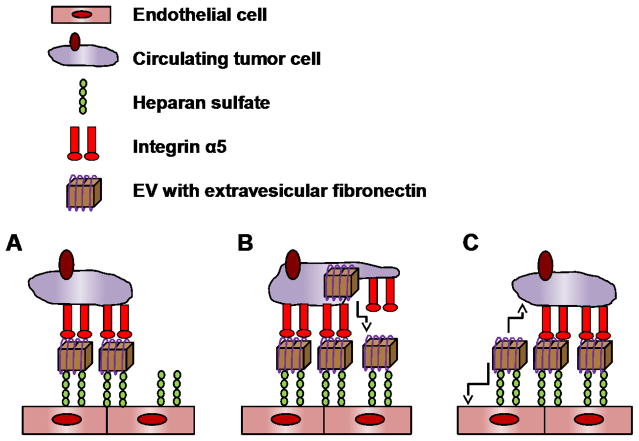Fig. 3.
Proposed role of EVs as stepping stones during migration. Cancer cells may rely on EVs to adhere to the endothelial cell walls during migration on the inner surface of blood vessels. This adhesion may be mediated by the binding of EVs containing extravesicular fibronectin to the endothelial cells through heparan sulfate and to the cancer cells through interactions with integrin α5 (A). As the cancer cell migrates it induces the secretion of EVs from the leading edge to facilitate adhesion (B). After advancing EVs from the lagging edge may be absorbed by either the cancer cell or the endothelial cell (C).

